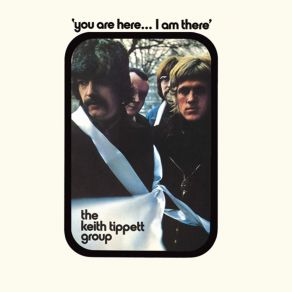You Are Here... I Am There
Download links and information about You Are Here... I Am There by Keith Tippett. This album was released in 1969 and it belongs to Jazz, Avant Garde Jazz genres. It contains 8 tracks with total duration of 46:56 minutes.

|
|
|---|---|
| Artist: | Keith Tippett |
| Release date: | 1969 |
| Genre: | Jazz, Avant Garde Jazz |
| Tracks: | 8 |
| Duration: | 46:56 |
| Buy it NOW at: | |
| Buy on iTunes $7.99 | |
| Buy on Amazon $6.99 | |
Tracks
[Edit]| No. | Title | Length |
|---|---|---|
| 1. | This Evening Was Like Last Year | 9:05 |
| 2. | I Wish There Was a Nowhere | 14:08 |
| 3. | Thank You for the Smile | 2:03 |
| 4. | Three Minutes from an Afternoon In July | 4:11 |
| 5. | View from Battery Point | 2:00 |
| 6. | Violence | 4:03 |
| 7. | Stately Dance for Miss Primm | 6:51 |
| 8. | This Evening Was Like Last Year | 4:35 |
Details
[Edit]Keith Tippett's debut album as a bandleader was and remains a rather remarkable affair in that it was the first engagement of British young people who came up in rock, pop, and blues bands to play jazz. Tippett himself is a classically trained musician who came to jazz via Mingus, George Russell, Coltrane, and Pharoah Sanders, but his compositional element also owes to composers such as Darius Milhaud, Vaughan Williams, and Frederick Delius. His front-line group contains the Soft Machine's Elton Dean, plus Nick Evans and Marc Charig, while his rhythm section contains drummer Alan Jackson and bassist Jeff Clyne — whose bowing sensibilities are not only highly developed but provocative as well. All eight tracks were composed and arranged by Tippett, but his penchant for writing for a particular group of musicians is very keen here: check the Charig solo in "I Wish There Was Nowhere," Tippett's own solo in "Violence," and the saxophonistry of Dean in "Stately Dance for Miss Primm" and both versions of "This Evening Was Like Last Year." Evans' trombone work so thoroughly saturates most charts that it's impossible to single anything out as a specific vehicle for him. Tippett's engaging harmonic sensibilities wrap around tonal investigation, a deeply committed sense of the blues and swing, and a color palette that owes plenty to Gil Evans without sounding the least bit derivative. This is brave jazz that makes use of space, harmonic organization, and free improv, much more so than some of his contemporaries who would just as soon do away with jazz as deepen or widen it. Very fine indeed.